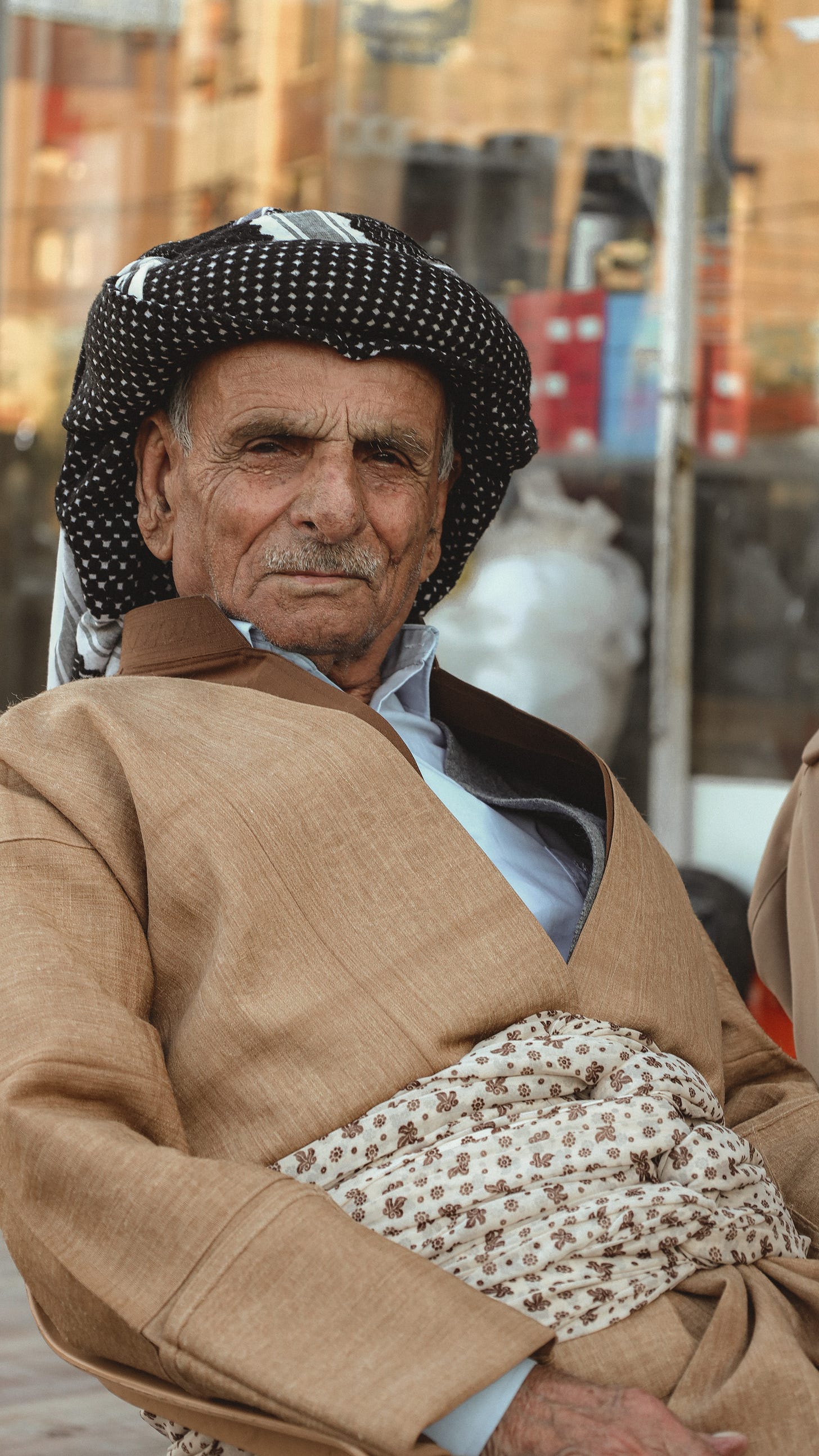The Faces of Kurdistan
Dilawer Behlawe’s pictures showcase Kurdish culture in all its complexity, celebrating the similarities and differences within a diverse ethnic group
The man had one of those time-worn faces that photograph well, so Dilawer Behlawe approached him to see if he would pose. “There was something about his facial expression that struck me,” Behlawe, 28, says. Later, going back through his pictures from that day, the man’s face leaped out, and Behlawe recalled the conversation they had shared. “I asked what happiness meant for him,” he says.
Behlawe has asked this question of many people as he travels around Iraqi Kurdistan, photographing faces to show the world what it looks like to be Kurdish in this part of the world. Usually, the best answers come from older people. “They have seen a lot of life. People are more likely to listen to their words of wisdom,” he says
But it’s the faces that do most of the talking in Behlawe’s photography project, Kurdistan Through My Camera, which aims to capture Iraqi Kurdistan’s communities, customs and cultures. “Kurds in other countries want to know how people live here,” says Behlawe, who moved to Duhok in Iraqi Kurdistan from Syria in 2014 alongside thousands of other Kurds fleeing the fighting.
Behlawe’s hometown Qamishli is in the Kurdish region of Syria, but living across the border in Iraqi Kurdistan is completely different. “The food, the language, the clothes, the culture, everything,” he says
There are around 35 million Kurds in the Middle East, most of whom inhabit the mountainous landscape between Iraq, Iran, Turkey and Syria, with a small population in Armenia. This concept of Kurdistan is not formally recognized, and only Iraq has granted its Kurdish region autonomous status. While their shared ethnicity and the struggle to carve out a homeland is a unifying factor, Kurdish communities are hugely diverse, with myriad traditions and different ways of life.
.
Since he began posting pictures of people’s faces last year, Behlawe’s Instagram account has grown from a few hundred to more than 25,000 followers, many of them from other countries. “Kurds living in southern Turley and Iran are very interested to learn about Kurds in Iraq,” he explains.
Behlawe has used an Innovation Hub grant from Ideas Beyond Borders to purchase a professional camera for this photography project, which aims to convey the diversity of Kurdish culture through the faces of people he encounters across Iraqi Kurdistan. “Faces are universal, you don’t need to speak a certain language to understand them,” he says.
Working as a photojournalist for Iraqi media and NGOs over the past six years has taught him to see the words behind people’s expressions. Mostly, he lets the images speak for themselves, inviting viewers to engage with these faces and the stories they tell. He doesn’t describe the culture, clothes, or how his subjects live, but he shares anecdotes of their conversations. “I ask them deep questions about life to shed light on how people think and the wisdom they have gained.”
“The Kurds all have a story to tell, individually and culturally. Only now are they finally able to open themselves up to the world, and we are proud to be working with so many Innovators who are determined to make this happen,” says Faisal Saeed Al Mutar, founder and president of Ideas Beyond Borders.
Mostly, he wants to know what makes them happy, a quest that unites not just Kurds but all humans across the planet. The answer was simple for the man in his favorite photograph, whose expression caught his attention that day. “Harmony at home,” he said.






